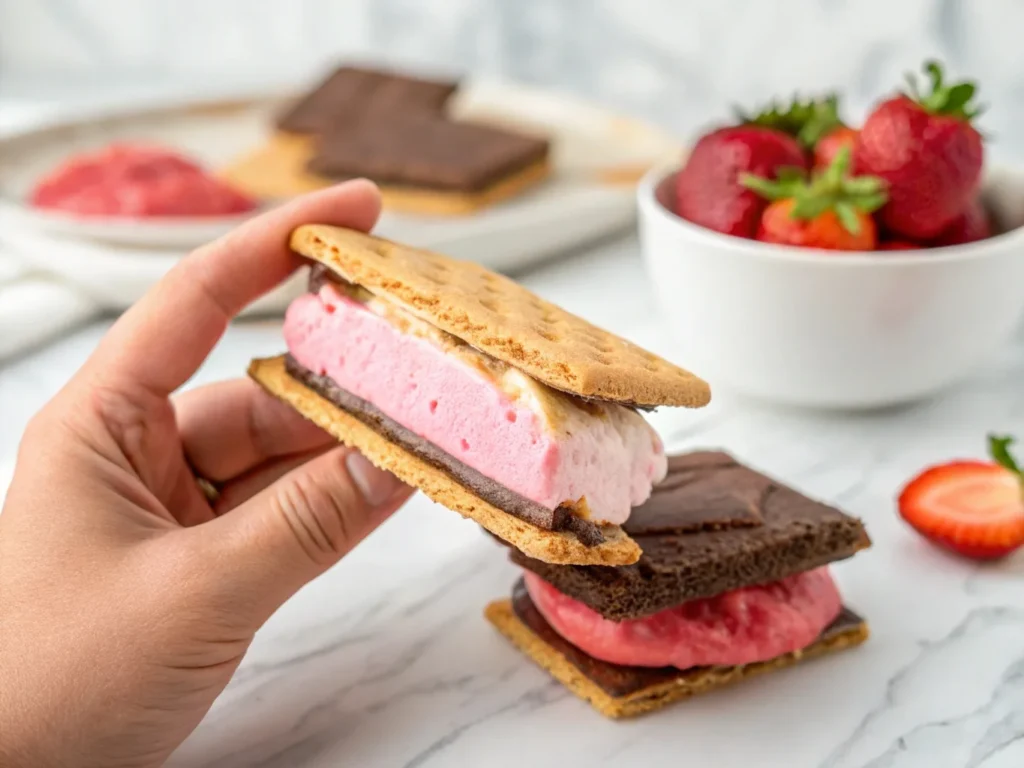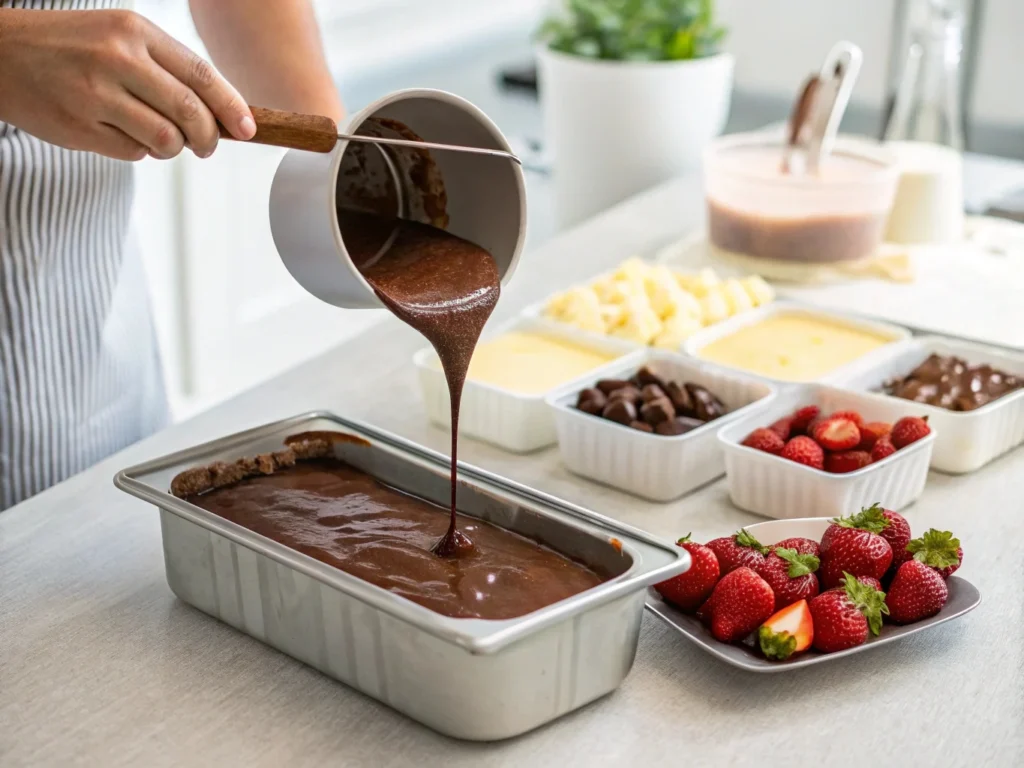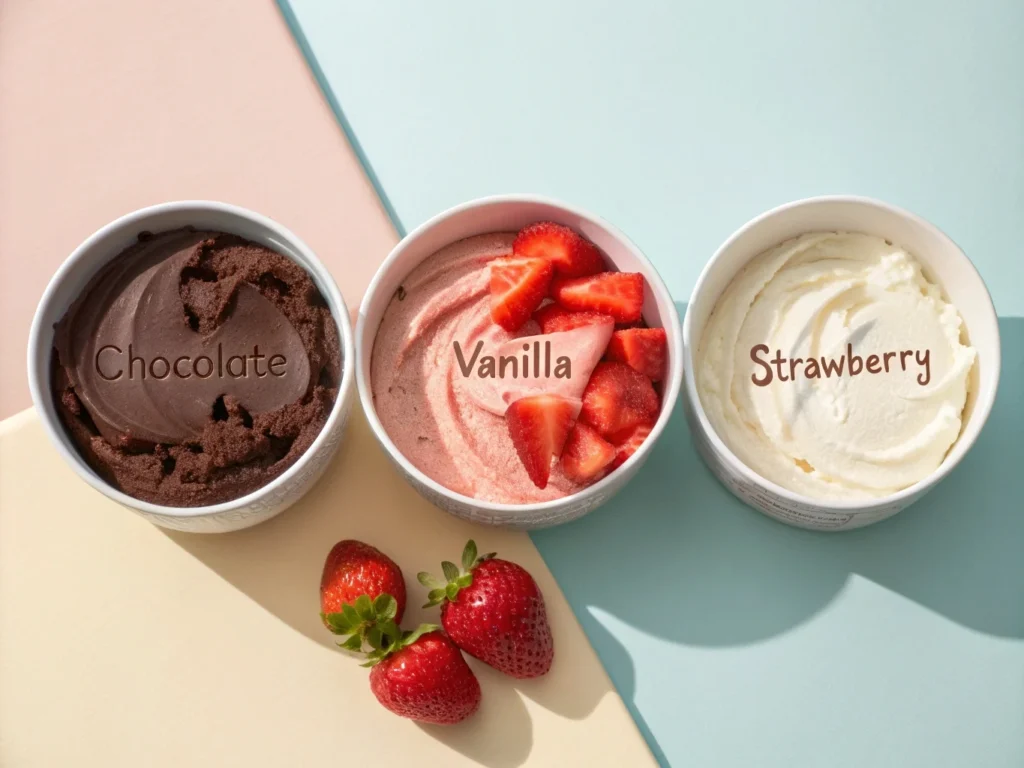Are you ready to indulge in a timeless dessert that artfully combines three layers of deliciousness? In this post, we’re diving into Neapolitan ice cream, a classic treat that balances chocolate, vanilla, and strawberry flavors in one beautiful package. By following these steps, you’ll discover how to make a vibrant, tri-flavored dessert from scratch, learn helpful tips for ensuring distinct stripes, and gain insights into surprising variations. Therefore, let’s get started on this journey toward creating a creamy, tasty masterpiece right in your own kitchen!
Understanding the Tri-Flavored Dessert
Creating the perfect three-layered ice cream requires more than simply freezing different flavors. Although the final result may seem straightforward, there’s a rich culinary history and a set of flavor principles at play. In addition, small details like layering technique and ingredient selection can make or break the success of this layered treat. Let’s explore the fundamentals so you can appreciate why this dessert has become a go-to option for many home cooks.
The Fascinating History Behind Layered Ice Cream

Although it’s commonly referred to as “Neapolitan,” the dessert owes its lineage to Italian immigrants who popularized the concept of layered confections in the United States. Historically, southern Italy (particularly Naples) had a culture of making frozen sweets that fused multiple flavors. Thus, the tri-flavored configuration we know today became the standard for this style of ice cream once it hit American shores in the 19th century.
Some historians speculate that chocolate, vanilla, and strawberry were chosen because they were among the most popular ice cream flavors of the time. Others argue that it was initially about offering consumers variety in a single package. Either way, it has become a beloved symbol of culinary creativity, bridging together contrasting tastes that somehow complement each other perfectly.
Key Flavor Characteristics
When you look at neapolitan ice cream, you’ll see three distinct blocks:
- Chocolate Layer: Rich, indulgent, and often slightly bitter. The cocoa content or type of chocolate used can drastically influence how this layer tastes.
- Vanilla Layer: Creamy, subtle, and sweet. This segment acts as the perfect “middle ground” between bold chocolate and bright strawberry.
- Strawberry Layer: Fruity, refreshing, and occasionally tangy. Fresh strawberries or high-quality purée make all the difference here.
From a flavor standpoint, the magic lies in how each segment offers its own experience, yet all three combined result in a symphony of taste.
Popular Takes from Top Recipe Sites
Several blogs and culinary platforms have reimagined this layered dessert in fascinating ways. For instance, Addicted to Dates introduces vegan-friendly approaches, ensuring those who avoid dairy can still enjoy a tri-flavored treat. Meanwhile, Bigger Bolder Baking focuses on a no-churn technique that’s accessible to beginners, allowing you to craft a layered masterpiece without specialized equipment. On the other hand, Nitha’s Kitchen provides a more traditional approach, emphasizing the importance of distinct stripes through partial freezing. And if you’d like to see how a store-bought brand does it, Simply Recipes offers an insightful review of Tillamook Neopolitan Ice Cream, analyzing the brand’s flavor strengths and creaminess.
Setting Up for Success: Tools and Ingredients
Before you make your first batch, it’s important to gather all your essentials. You’ll likely need:
- A freezer-safe container or loaf pan, typically one that holds about 1.5 to 2 quarts.
- Mixing bowls: one for each layer, plus an extra for your base mixture if you’re making a custard.
- Measuring cups and spoons to ensure proper proportions.
- Whisks or a stand mixer to whip cream efficiently if you’re opting for the no-churn approach.
- A spatula to help layer each flavor without mixing them.
- High-quality ingredients, such as premium cocoa powder, fresh strawberries (or a well-sourced purée), and real vanilla extract.
If you’re going the custard route, you’ll also want an ice cream maker on hand or you can follow an alternative method like the no-churn technique from Bigger Bolder Baking, which relies on whipped cream and sweetened condensed milk. For general ice cream-making guidelines (including temperatures and storage tips), consult The Spruce Eats.
Crafting Your Homemade Trio of Flavors
Now that you’ve gathered your basics, it’s time to dive into the step-by-step process. As you’ll see, layering and flavoring are equal parts art and science. However, with patience and the right approach, you’ll achieve vibrant stripes and balanced tastes.
Preparing the Base Mixture
To kick things off, decide whether you’ll go for a traditional custard base or a no-churn recipe. A custard-based ice cream involves cooking egg yolks, sugar, and dairy until it thickens. This approach often produces a richer texture and slightly more “professional” result. However, it does require extra steps heating, cooling, and churning.
If you’re short on time, the no-churn method from Bigger Bolder Baking might be your best bet. Here’s a simple breakdown:
- Whip the Cream: Combine heavy cream with a pinch of salt (and sometimes sugar) until you form soft peaks.
- Add Sweetened Condensed Milk: Fold the milk into the whipped cream gently, maintaining as much air as possible.
- Flavor Divisions: Separate into three bowls for each flavor.
Regardless of the method you choose, your first step is to ensure the base mixture is silky-smooth and ready to absorb flavors. Thus, invest time in perfecting this foundation.
Dividing and Flavoring Each Layer

Once you have a single large batch of base, the next step is dividing it into three portions. Typically, you’ll measure out roughly equal volumes in separate bowls. Then:
- Chocolate Portion: Stir in high-quality cocoa powder or melted chocolate. The ratio varies, so start small and keep tasting until the chocolate flavor feels bold enough.
- Vanilla Portion: Infuse your base with vanilla extract or real vanilla bean seeds. If you’d like an ultra-smooth middle layer, consider straining the mixture to catch any pods or lumps.
- Strawberry Portion: Blend fresh strawberries into a purée (or use a premade jam or sauce) and incorporate it into the base. Keep in mind that the more liquid you add, the higher the risk of watery ice crystals, so do a quick taste check to ensure consistency.
When working with dairy-free or vegan alternatives, Addicted to Dates suggests coconut cream or oat-based creams for a lush texture. In addition, you may want to reduce the sugar if using sweetened non-dairy milks.
Layering Techniques for Sharp Stripes

To get those iconic stripes, you’ll need a gentle hand and the right sequence. An easy approach is:
- Pour the First Layer (chocolate, vanilla, or strawberry) into your container. Smooth it evenly with a spatula.
- Partial Freeze for 20–30 minutes, allowing the layer to firm up slightly.
- Add the Second Layer, smoothing it gently to avoid merging.
- Repeat the partial freeze step again before adding the final layer.
No-Churn vs. Churned Approaches
- Churned: For a custard-based recipe, you’ll typically churn each flavor separately in an ice cream maker. After you finish churning one flavor, transfer it to your container and freeze, then proceed with the next. Although it can be time-consuming, you’ll often get a luxurious consistency.
- No-Churn: This simplified route relies on whipped cream and condensed milk. The layering process is similar, but you’ll skip the actual churning machine. Because you incorporate air manually, the final texture is somewhat softer and melts faster.
On the other hand, you might prefer a hybrid approach, especially if you have leftover homemade vanilla ice cream. In that scenario, you could churn chocolate and strawberry flavors only, layering them with store-bought or leftover vanilla.
(Time-Saving Hack: Use store-bought vanilla ice cream and make only the chocolate and strawberry layers from scratch!)
Secrets to Ensuring a Perfect Three-Flavor Treat
Although the layering concept is straightforward, there are subtleties that help differentiate a so-so dessert from a show-stopping tri-flavored ice cream.
Overcoming Common Ice Cream Pitfalls
One of the most typical issues is a grainy or icy texture. This often stems from improper freezing conditions or insufficient mixing. However, you can conquer these pitfalls by:
- Ensuring the mixture is very cold before freezing—chill your base in the fridge for a few hours.
- Using enough sugar or sweetener: Sugar lowers the freezing point, keeping the texture softer.
- Storing it in an airtight container to reduce ice crystal formation.
If your dessert accidentally turns grainy, you can still salvage it by pulsing it in a food processor or letting it thaw partially and re-freeze. On the other hand, if it’s rock-solid, let it sit at room temperature for about five minutes before scooping.
Preserving Distinct Flavors in Each Layer
You want your chocolate, vanilla, and strawberry layers to stand out. Therefore, consider these tips:
- Add distinct sweeteners: A drizzle of honey in your strawberry portion or a bit of powdered sugar in your chocolate batch can enhance each layer’s unique profile.
- Keep Tools Separate: Use a clean spatula or spoon for each flavor so you won’t mix them inadvertently.
- Taste As You Go: Adjust sugar, cocoa, or vanilla to ensure each portion tastes great on its own.
Maintaining Bright Colors
The visual appeal of neapolitan ice cream matters just as much as its flavor. Therefore, do the following:
- Choose Fresh Berries: Ripe, vibrant strawberries will give you a naturally pink hue. If you’re using jam, pick a brand with minimal artificial dyes to maintain authentic color.
- Opt for Top-Notch Cocoa: High-quality cocoa powder results in a deeper, more appealing chocolate shade.
- Avoid Over-Mixing: Too much stirring can cause swirl effects that blur your stripes. Gently pour and smooth each layer.
Keeping the Scoop Soft and Creamy
When serving your tri-layered creation, a too-firm texture can be frustrating. Thus, consider these strategies:
- Add a small amount of alcohol (for adult versions), such as vodka or liqueur, which helps lower the freezing point.
- Incorporate invert sugar (like corn syrup or golden syrup) in small quantities. This can prevent an overly icy final product.
- Let It Rest: Removing the container from the freezer a few minutes before serving allows the dessert to soften slightly.
Creative Serving Ideas and Variations

After you’ve gone through all the effort of crafting these three delicious layers, you deserve a bit of fun in how you serve and modify your masterpiece. In addition, these creative possibilities can help you elevate your dessert game even further.
Beyond the Scoop Unique Presentations
Serving neapolitan ice cream in a standard bowl is classic, but you can level up by:
- Creating Mini Dessert Cups: Layer the flavors in small clear cups for individual servings, topped with whipped cream and sprinkles.
- Using Waffle Cones: The sweet crunch of a waffle cone adds an extra dimension, plus it looks incredibly inviting.
- Layering in Mason Jars: For a rustic, Instagram-worthy approach, scoop each layer into small mason jars with fruit toppings, cookie bits, and whipped cream.
Many of these ideas tie in with Bigger Bolder Baking’s flamboyant presentation style, proving that a bit of pizzazz makes the final product even more appealing.
Vegan and Dairy-Free Versions
To include everyone, why not try a dairy-free variation? Addicted to Dates offers a fantastic vegan approach by using coconut cream or cashew milk. Here are some pointers:
- Coconut Cream Base: It whips nicely and yields a rich mouthfeel.
- Non-Dairy Alternatives: Almond milk, soy milk, or oat milk can all work, but the final consistency might differ slightly.
- Natural Sweeteners: Maple syrup or agave can seamlessly replace standard sugar in many recipes, though you may need to adjust ratios to maintain thickness.
For more inspiration check out How To Make Cottage Cheese Snacks That Everyone Will Love
Toppings and Mix-Ins
Once you’ve nailed the core tri-flavored dessert, consider spicing it up with add-ons:
- Candy Pieces: Mini chocolate chips, crushed peppermint candies, or swirl ribbons of fudge.
- Fresh Fruit: Sliced bananas, macerated berries, or tropical fruit slices can provide surprising bursts of flavor.
- Textural Elements: Crushed cookies, cereal flakes, and chopped nuts create a varied bite in each spoonful.
Remember that too many add-ins might blur the separate layers. However, a light sprinkle on top can be perfect for adding visual flair.
Neapolitan Ice Cream Cake and Beyond
Why stop at ice cream alone when you can transform these layers into a show-stopping cake? The basic formula involves:
- Lining a Springform Pan: Press in a cookie crust or a layer of chocolate cake if desired.
- Layering Your Three Flavors: Freeze each layer partially before adding the next.
- Decorating: Top with whipped cream, fruit, or a drizzle of chocolate sauce.
This approach can be ideal for birthdays, anniversaries, or any occasion where a sliceable dessert steals the show. On the other hand, you could also create milkshakes, parfaits, or even neapolitan ice cream sandwiches using your favorite cookies.
FAQs about Neapolitan Ice Cream
Why is Neapolitan ice cream a thing?
Neapolitan ice cream caught on because it offers chocolate, vanilla, and strawberry flavors side by side, catering to varying tastes in one convenient container. Moreover, it has ties to Italian influence, and the combination of these three classic flavors has timeless appeal.
What 3 Flavours make up a Neapolitan ice cream?
The traditional trio is chocolate, vanilla, and strawberry. These flavors are layered together to create the distinct stripes you typically see in this dessert.
What is the difference between Neapolitan and Neopolitan ice cream?
The correct spelling is “Neapolitan,” which references its Italian heritage from Naples. “Neopolitan” is simply a misspelling but often used interchangeably in casual settings. The dessert itself remains the same three-layered concept.
Which flavor is not part of the Neapolitan ice cream?
Commonly, chocolate, vanilla, and strawberry constitute the classic flavors. Anything else, like pistachio or mint, would fall under a variation and not the traditional tri-flavored format.
Conclusion
As you can see, neapolitan ice cream is more than just a convenient marriage of three flavors. It represents culinary tradition, creativity, and the joy of blending contrasting tastes into a single dessert. Whether you choose a custard-based method or opt for a quick no-churn route, the keys are patience, quality ingredients, and a bit of layering finesse. Therefore, the next time you crave something that combines the richness of chocolate, the velvety sweetness of vanilla, and the bright tang of strawberry, you’ll know precisely how to craft it at home.
Ready to put your newfound knowledge to the test? Grab your ingredients, get creative with layering, and savor each cool, flavorful spoonful. You’ll soon discover why neapolitan ice cream has been delighting dessert enthusiasts for generations and why it continues to captivate the hearts (and taste buds) of foodies worldwide.

